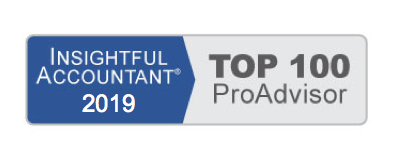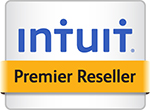My experience over the years has been that business owners do not look at the Balance Sheet report often, if at all. However, nearly every business owner I have worked with has reviewed the Profit & Loss Standard report for their business. The reason might be that the Profit & Loss report is easier to interpret than the Balance Sheet report.
Even with the simple organization (money in, money out) of the Profit & Loss report, a careful review is prudent for the business owner who wants to track how well the business is doing financially. To create a Profit & Loss Standard report, from the menu bar, select Reports, Company & Financial, Profit & Loss Summary (or Profit & Loss Detail).
There are two methods for reviewing your Profit & Loss:
- Cash Basis—Income is recognized when received. Expenses are recognized when paid.
- Accrual Basis—Income is recognized as of the date of the customer’s invoice. Expenses are recognized as of the date of the vendor’s bill.
Cash basis reporting offers an incomplete snapshot in time because it shows what cash has changed hands, but doesn’t show unpaid bills from vendors or uncollected invoices from customers.
Additionally, many companies file their annual tax returns using cash basis reports. There is nothing wrong with looking at reports prepared with cash basis accounting. However, I encourage all my clients to consider reviewing the Profit & Loss Standard report in accrual basis.
Accrual basis, although more complex, provides so much more information about the business:
- Matching Principle—Revenue (customer invoice) is recorded in the same accounting period as the expenses (vendor bills, paychecks, and the like) associated with services or products sold on the customer’s invoice.
- Seasonal Variations—Track how your business performs financially, for example, by comparing the same month across multiple years.
- Tracking Receivables and Payables—This information helps with both short-term and long-term forecast planning.
With QuickBooks, you can easily change the report from cash to accrual basis by clicking the Customize Report button and manually selecting Cash or Accrual Basis on the Display tab of the Modify Report dialog box.
–> Tip: To review recurring monthly charges, it is useful to prepare your Profit & Loss by the month. From the Profit & Loss report, Columns drop-down menu at the top of the report, select Month.
When reviewing the details of your Profit & Loss Detail report, you might want to look for these types of transactions:
- Monthly charges, such as rent, utility, equipment lease expenses, or other recurring expenses. Verify that the correct number of these charges is recorded, such as 12 monthly payments for rent.
- Credit card expenses reported to the proper expense accounts.
- Nonpayroll payments to owners, which normally are recorded to draw or equity type accounts.
- Purchase of equipment with a significant cost, which should have been recorded to an asset account.
- The principle portion of loan payments for vehicles or equipment; these should have been recorded to liability accounts.
A business owner who takes the time to review the Profit & Loss Detail report can feel more confident that business decisions founded on financials are as accurate as possible.












